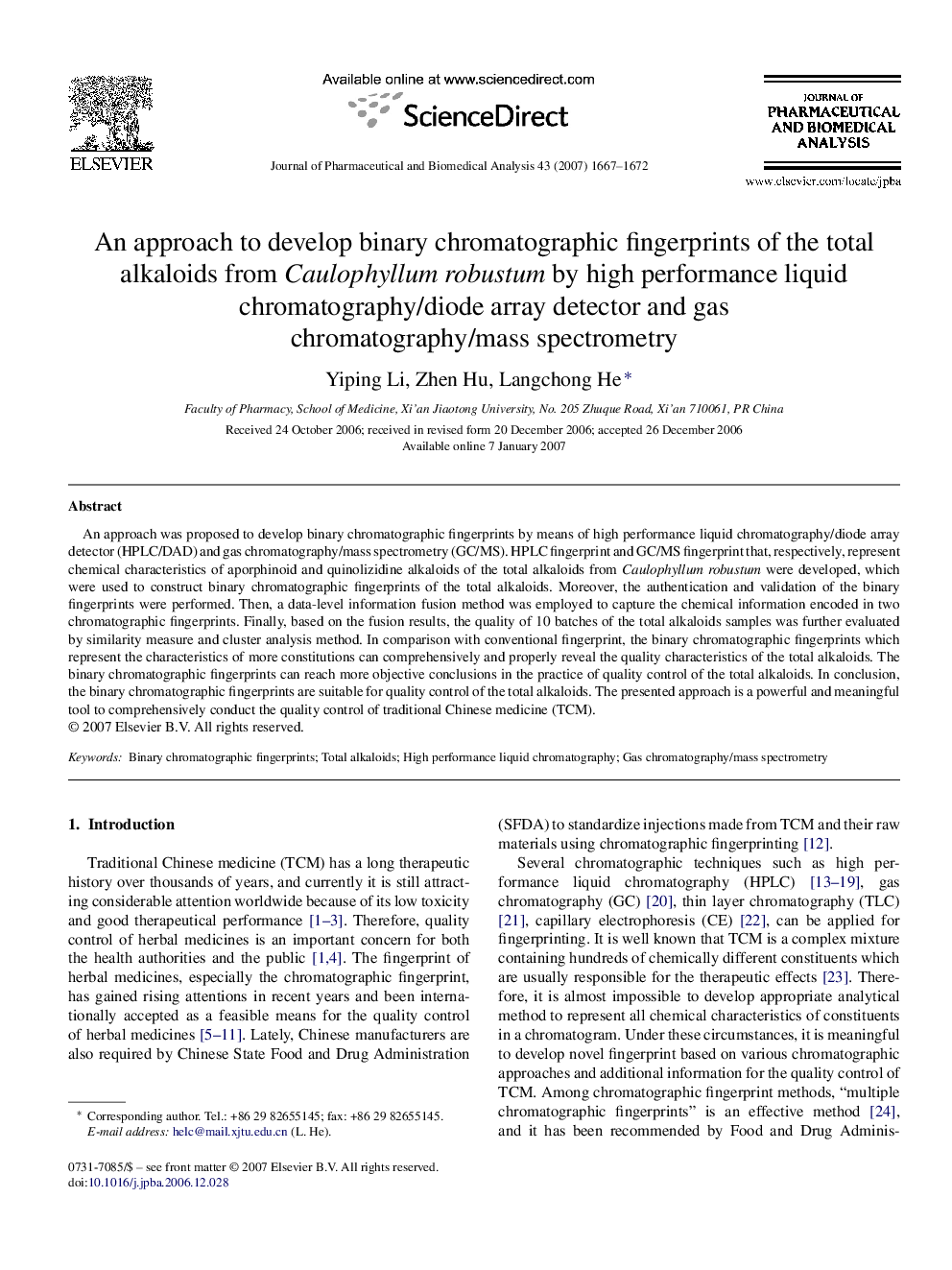| Article ID | Journal | Published Year | Pages | File Type |
|---|---|---|---|---|
| 1224457 | Journal of Pharmaceutical and Biomedical Analysis | 2007 | 6 Pages |
An approach was proposed to develop binary chromatographic fingerprints by means of high performance liquid chromatography/diode array detector (HPLC/DAD) and gas chromatography/mass spectrometry (GC/MS). HPLC fingerprint and GC/MS fingerprint that, respectively, represent chemical characteristics of aporphinoid and quinolizidine alkaloids of the total alkaloids from Caulophyllum robustum were developed, which were used to construct binary chromatographic fingerprints of the total alkaloids. Moreover, the authentication and validation of the binary fingerprints were performed. Then, a data-level information fusion method was employed to capture the chemical information encoded in two chromatographic fingerprints. Finally, based on the fusion results, the quality of 10 batches of the total alkaloids samples was further evaluated by similarity measure and cluster analysis method. In comparison with conventional fingerprint, the binary chromatographic fingerprints which represent the characteristics of more constitutions can comprehensively and properly reveal the quality characteristics of the total alkaloids. The binary chromatographic fingerprints can reach more objective conclusions in the practice of quality control of the total alkaloids. In conclusion, the binary chromatographic fingerprints are suitable for quality control of the total alkaloids. The presented approach is a powerful and meaningful tool to comprehensively conduct the quality control of traditional Chinese medicine (TCM).
